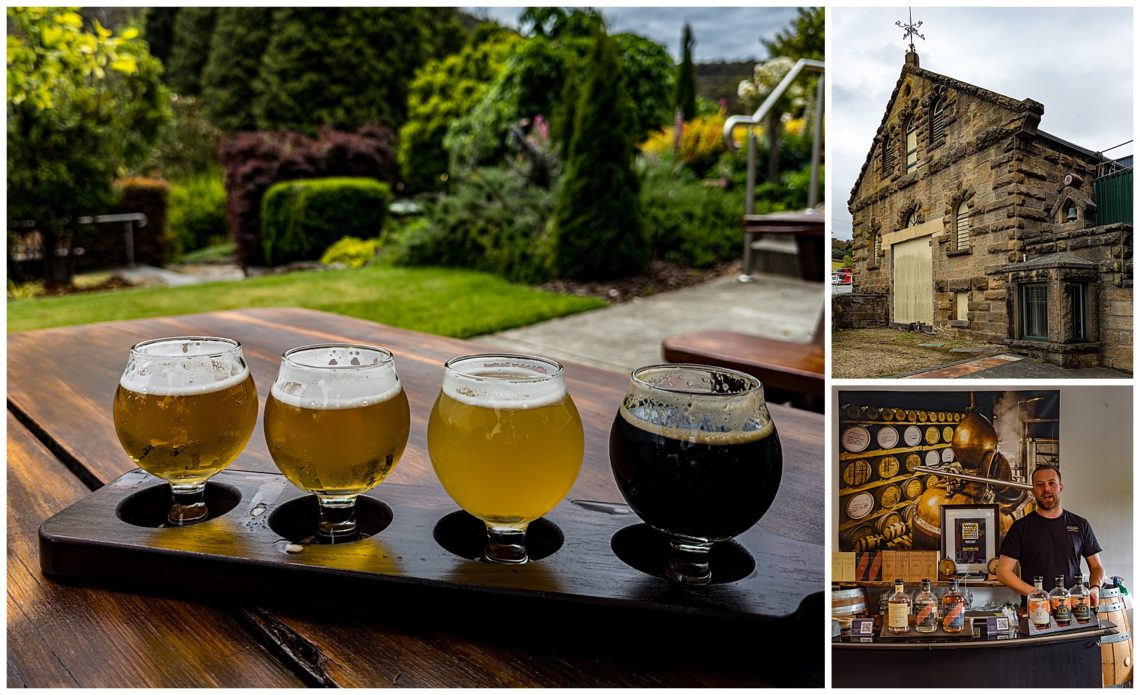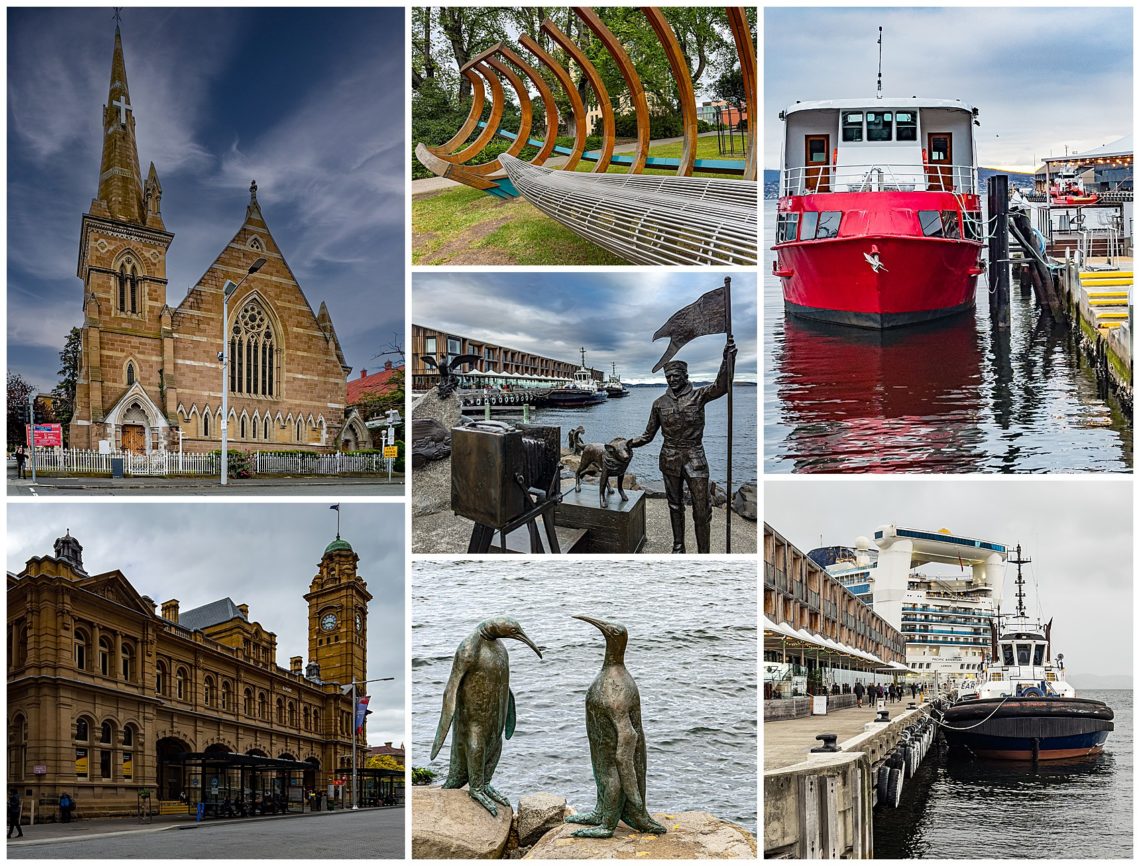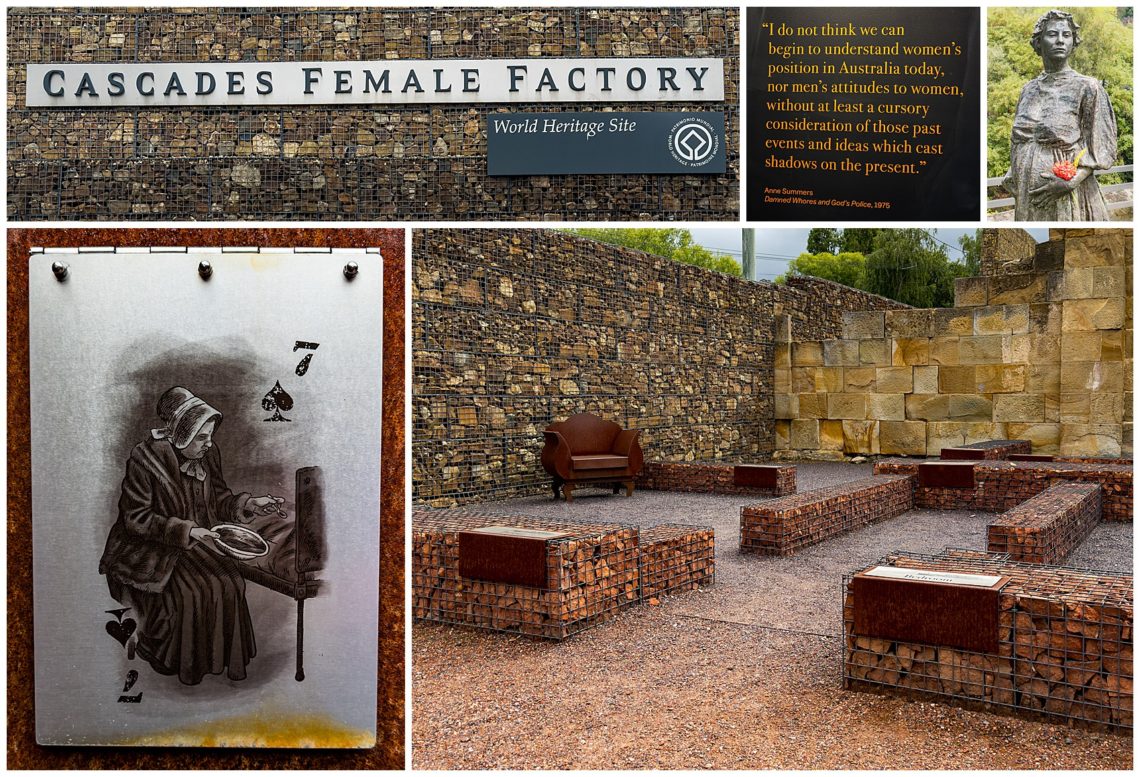
Tasmania is widely known for its clean air, unique wildlife, stunning scenery and a rich history of slavery. They also drive on the wrong side of the road, so coming from America, it can be a terrifying experience, when we drove from Launceston to Bichena to Hobart. We never overcame turning on our windshield wipers instead of our turn signals, since the steering column is on the right side of the vehicle, and the controls are on a different side than we are accustomed. Some of the unique aspects of driving included “skinny” roads, one-lane bridges, roundabouts rather than traffic signals, strange traffic directions (such as Give Way instead of Yield), Penguin and Kiwi Crossing signs, Watch for Aged Pedestrians (instead of Disabled), and a host of others that give Americans pause.
One top attraction is the Cascade Brewery (ab0ve), located just south of Hobart. It was established in 1824 by ex-convict Peter Degraves, and is the oldest brewery in Australia. When you take a tour of the brewing process, the historic sandstone buildings still exude an old world charm. Part way through the tour, they share their secret recipe for their renown craft beer. At the end, you get a chance to taste 4 beers on their tasting paddle (lower-left). Most of these beers are sold to the locals only, since the small distillery cannot produce enough for export. (Unfortunately, photography was not allowed inside the operating facilities, so these images are all we have to show)

While we were in Hobart, the capital of Tasmania and its chief port, we went on another walking tour to learn about the history of Tasmania. Tasmania was named after Dutch explorer Abel Tasman, who sited the island on 24 November 1642. Originally, the island was named Van Diemen’s Land, but renamed to remove the unsavory link with its penal settlements. Between 1804 and 1853, more than 70,000 convicts were forceably transported to Tasmania to become the work force to build its infrastructure.
In England, the tiniest of infractions would incur a 7 year “transport” sentence to one of Australia’s penal colonies, including Port Arthur in Tasmania. After being put to work, prisoners would return to their cells in the evenings, until their sentence was completed. There were 19 crimes that would incur a sentence of hard labor in Australia, including the crime of impersonating an Egyptian, petty larceny under one shilling, grand larceny above one shilling, burning clothes, and stealing fish from a pond or river.
There is a unique connection between Antarctica and Hobart, which is found all around the Hobart waterfront in the form of sculptures (center column). Hobart is the closest major city to the Antarctica, and was a major base for 19th century Antarctic whaling.

We also toured the Cascades Female Factory, which was a prison for women from 1828 to 1856. Its purpose was to further remove women convicts from the temptations and corruption of Hobart. Some of the women were sent here directly from England, mostly for petty crimes or for such things as “dressing unbecoming to a woman.” Others were sent to this prison from the local town, often for nothing more than flirting with a married man.
12% of the prisoners sent from England were women. The youngest female prisoner sent from England was 11 years old, with her crime being stealing another girl’s clothing in England. The youngest female in the prison was a 3 year-old girl from the local town, whose crime was living on the streets because her parents had died. They were tasked with cooking, hospital attendants, making and mending clothes. There were more than 1000 women packed into this facility built for 100.
